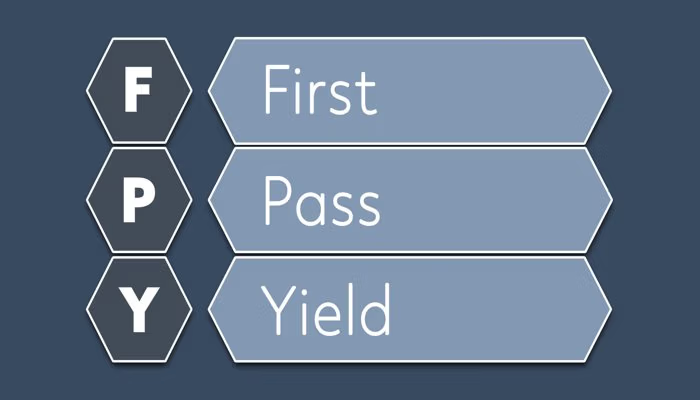Summary: Keiretsu refers to a strategic business network where companies, such as Toyota and Meiji Mutual Life Insurance Company, form alliances to improve collaboration and efficiency. There are two types of keiretsu: horizontal and vertical. Horizontal keiretsu includes companies from different industries, like Mitsubishi Motors and Mitsubishi Trust and Banking, while vertical keiretsu focuses on manufacturers seeking new markets, such as Toyota’s supply chain network. The alliances are often supported by banks like Mitsubishi Shoji, which provide capital and facilitate the smooth functioning of the supply chain. Although each company operates independently, Keiretsu members maintain close ties with suppliers, distributors, and financial institutions, fostering mutual success and operational efficiency. This interdependence strengthens the network, ensuring sustained growth and competitive advantage for all parties involved.
Introduction to Keiretsu
What is Keiretsu?
Keiretsu refers to a term describing a business network created through collaborations, among companies. The term “keiretsu” signifies an independent group of member companies working together seamlessly. This unique business model has had an impact, on shaping the economy and business customs.
Exploring the Business Culture in Japan
Before delving into keiretsu it’s important to understand the basics of business culture. Japanese companies value long-term relationships and mutual trust which are deeply embedded in their business operations. This cultural element greatly affects how keiretsu is structured and operates.
Different Types of Keiretsu
Vertical Keiretsu
One form of keiretsu is keiretsu, where manufacturers form partnerships with suppliers and distributors. Within this framework companies in the keiretsu work to ensure a smooth flow of products and services along the supply chain. Vertical keiretsu enables companies to strengthen their market positions and explore markets collectively.
Horizontal Keiretsu
Another type of keiretsu is keiretsu involving companies operating in industries or related sectors. The goal of keiretsu is to enhance supply chain efficiency through business connections. Companies within this structure can pool resources reduce expenses and enhance competitiveness.
Looking to optimize your operational efficiency?
Find out how Manufacturing Operations Management software can provide the tools to improve your processes.
Implementation of Keiretsu in Business
Business Relationships within the Keiretsu
The keiretsu is a network involving firms, including zaibatsu holding companies as well, as influential suppliers and manufacturers. These groups of companies which range from primary to supporting roles make up the core of the keiretsu system operating both vertically and horizontally. Vertical keiretsus, like the one linked with Toyota, consists of manufacturers and suppliers collaborating to explore markets and ensure a supply chain. In contrast, horizontal keiretsus involve trading firms and distributors teaming up to costs and compete effectively within the network.
Supplier Relationships
A critical aspect of keiretsu is the relationships that companies build with their suppliers. Keiretsu members often establish partnerships with suppliers enabling them to achieve economies of scale maintain quality standards and gain an edge in the market. These supplier relationships significantly contribute to the success of the keiretsu system.
Cross Shareholding and Collaboration
Cross shareholding is a practice, within a keiretsu framework where member companies occasionally hold ownership stakes in each other. This practice enhances interdependence and cooperation among keiretsu members. Cross shareholding promotes stability, within the network by aligning the interests of member companies and fostering long-term collaboration.
The Keiretsu System
Historical Context; From Zaibatsu to Keiretsu
Exploring the background of the keiretsu system requires us to delve into its origins. Before World War II, zaibatsu, which were family-controlled conglomerates held sway over the Japanese economy. Post-war reforms by Allied forces dismantled these structures paving the way for the rise of keiretsu, which promoted decentralized collaboration and efficiency – key principles of Lean Thinking.
The Major Six Keiretsu
Known as the Big Six keiretsu these influential business groups in Japan encompass an array of subsidiaries and affiliates across sectors. The prominent members are Mitsubishi, Sumitomo, Mitsui, Fuyo, Sanwa, and Dai Ichi Kangyo. These keiretsu have played roles in Japan’s progress and continue to wield significant influence over the nation’s business environment.
Illustrating with Mitsubishi Keiretsu
Let’s examine the Mitsubishi keiretsu as a case in point. The Mitsubishi Group consists of companies engaged in industries such as automotive, finance, and electronics, among others.
Mitsubishi companies work closely together in the keiretsu system sharing resources, technologies, and market insights to boost their strength.

Advantages of Keiretsu
Keiretsu provides advantages to its member firms;
1. Collaboration and Resource Exchange
By working keiretsu members can utilize each other’s resources, knowledge, and skills to enhance efficiency and competitiveness.
2. Stable Supply Chains
The strong ties, within keiretsu ensure a flow of goods and services reducing the likelihood of disruptions.
3. Access to Funding
Through shareholding arrangements in the keiretsu structure companies gain increased access to capital and financial resources. This access, known as “keiretsu capital”, allows member companies to secure funding for expansion, new projects, and improved supply chain efficiency.
4. Market Influence
Collectively keiretsu members wield market power that enables them to influence industry trends and standards.
Challenges of Keiretsu
Despite its benefits keiretsu also poses challenges;
1. Limited Supplier Options
Companies within keiretsu networks may have restricted supplier choices potentially constraining their flexibility and innovation.
2. Resistance to Change
The knit nature of keiretsu can lead to resistance against change and a slow response to market shifts.
3. Risk of Groupthink
Groupthink tendencies may emerge within the keiretsu structure, hindering independent thought and innovative ideas. However, these challenges can be mitigated through strong corporate governance practices.
4. Network Dependency
Businesses reliant, on the keiretsu network could encounter difficulties if the network faces issues or disruptions.
Keiretsu, in Today’s Business World
The Changing Face of Keiretsu
Over the years the keiretsu system has adapted to meet the demands of evolving business landscapes. Some keiretsu groups have transformations. Disbanded, giving rise to new ones. While the impact of keiretsu on Japan’s business scene remains significant, the degree of reliance and collaboration among keiretsu companies has shifted over time.
Adoption of the Keiretsu Model in Global Business
The concept of keiretsu has found resonance in nations in East Asia. Countries like South Korea and Taiwan have embraced business structures like chaebols and guanxi networks. These systems mirror aspects of keiretsu by fostering ties and cooperative relationships among member firms.
FAQ | Keiretsu
What does the term "keiretsu" mean?
“Keiretsu” 系列 is a Japanese term that loosely translates to “headless combination,” symbolizing a decentralized yet interconnected group of companies. This business network is formed by strategic alliances between various firms across industries in Japan, promoting collaboration without a singular controlling entity. The structure allows companies to remain operationally independent while benefiting from shared resources, financial support, and long-term partnerships within the network.
How did keiretsu evolve over time?
Keiretsu emerged in Japan after World War II when the Allied forces dismantled the zaibatsu, large family-controlled industrial conglomerates. These new corporate networks fostered close cooperation between manufacturers, suppliers, and banks, enabling more efficient production methods. Toyota, a key member of a keiretsu, developed the Toyota Production System (TPS), which laid the foundation for Lean Production. The keiretsu structure supported Just-in-Time (JIT) manufacturing by ensuring reliable supplier relationships, minimizing inventory, and improving coordination – principles that later shaped global manufacturing.
What are the types of japanese keiretsu?
There are two main keiretsu types: vertical and horizontal. Vertical keiretsu, such as those seen with Toyota, involves alliances between manufacturers, suppliers, and distributors, creating a closely knit supply chain. On the other hand, Japanese horizontal keiretsu is an alliance of companies operating in the same industry or related sectors, typically involving members of larger, multi-industry groups. These horizontal alliances allow for resource sharing and mutual support across various organizational structures, enhancing overall business strength.
What are the major keiretsu in Japan?
The major keiretsu in Japan, often called the Big Six, are the japanese comapanies Mitsubishi, Sumitomo, Mitsui, Fuyo, Sanwa, and Dai-Ichi Kangyo. These keiretsu have a wide range of subsidiaries and affiliates across various industries.
In what ways does keiretsu operate within businesses?
Keiretsu operates through close business relationships among member companies. This includes long-term contracts, strategic supplier relationships, and cross-shareholding. The goal is to ensure a stable supply chain, resource sharing, and cooperation for improved efficiency and competitiveness.
How do keiretsu networks enhance inter-company collaboration?
Keiretsu networks strengthen collaboration by creating long-term partnerships between manufacturers, suppliers, and financial institutions. This close integration enhances supply chain stability and encourages shared process improvements. At the operational level, many companies within a Keiretsu apply shopfloor management principles to ensure transparency, efficiency, and continuous improvement in production, aligning processes across different organizations in the keiretsu framework.
What are the benefits of keiretsu?
Keiretsu offers several benefits, including collaboration and resource sharing, stable supply chains, access to capital, and collective market influence. These advantages contribute to the overall competitiveness and success of member companies.
What are the challenges of keiretsu?
Some challenges of keiretsu include limited supplier choices, resistance to change, the risk of groupthink, and dependency on the network. Keiretsu structures can sometimes hinder independent thinking and innovation.
How does a keiretsu forum differ from other investment groups?
Unlike traditional investment groups, keiretsu forums leverage the concept of a keiretsu – an interlinked group of companies that collaborate for mutual benefit. Members of a Keiretsu Forum not only invest capital but also offer mentorship, industry connections, and expertise to the companies they support. This approach enhances business synergy and long-term collaboration.
Image: Adobe Stock – Copyright: © lexiconimages – stock.adobe.com





